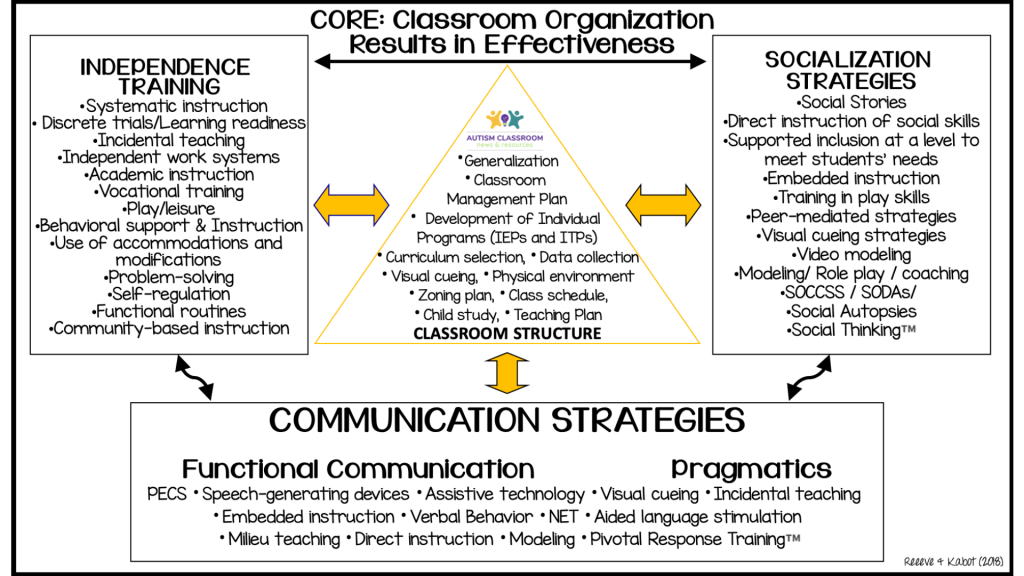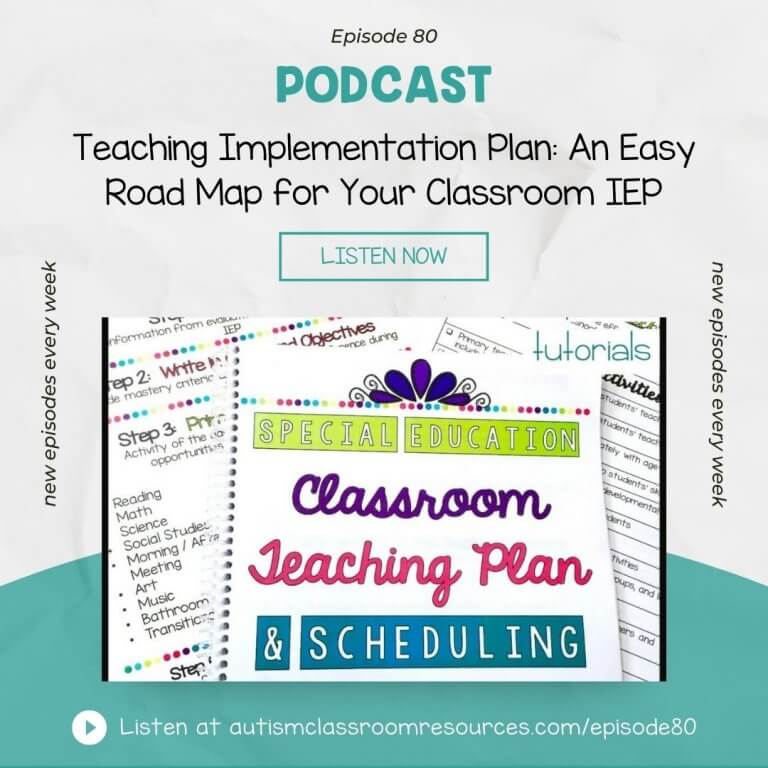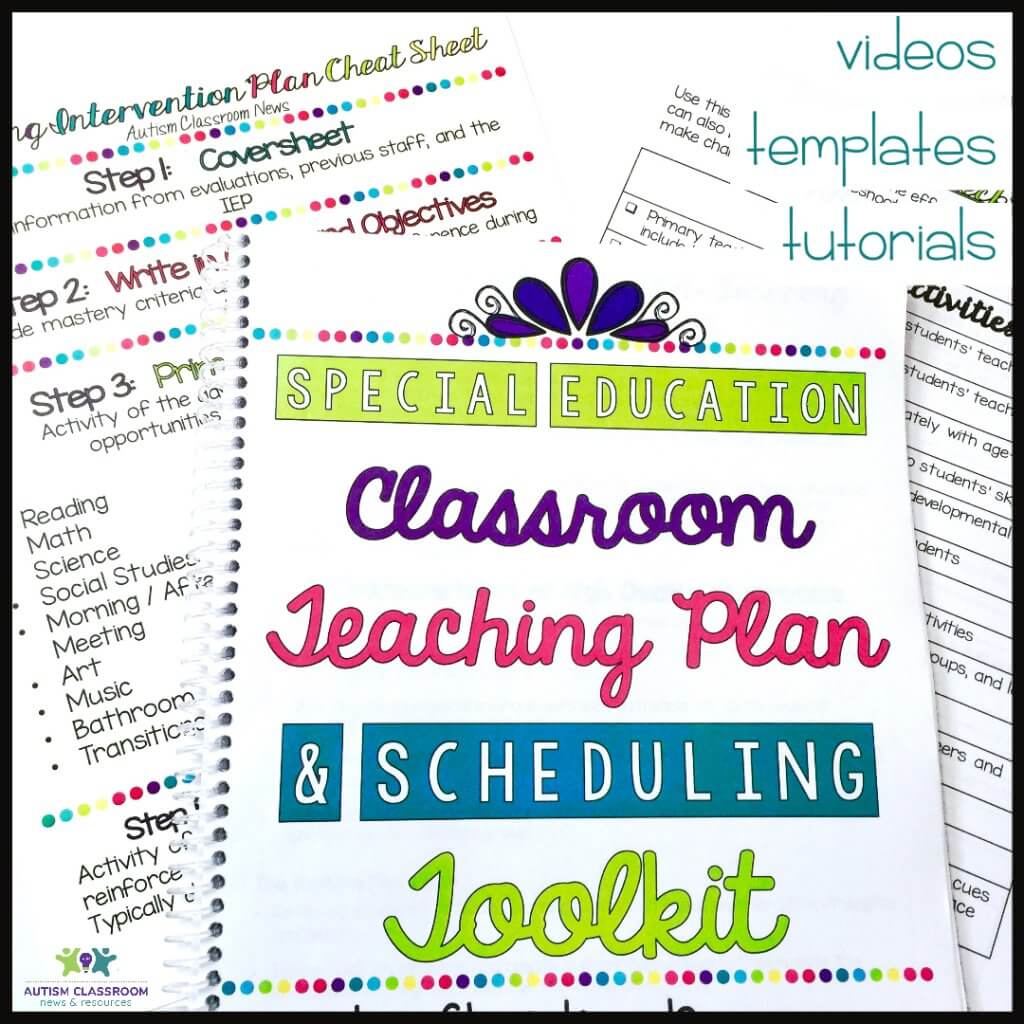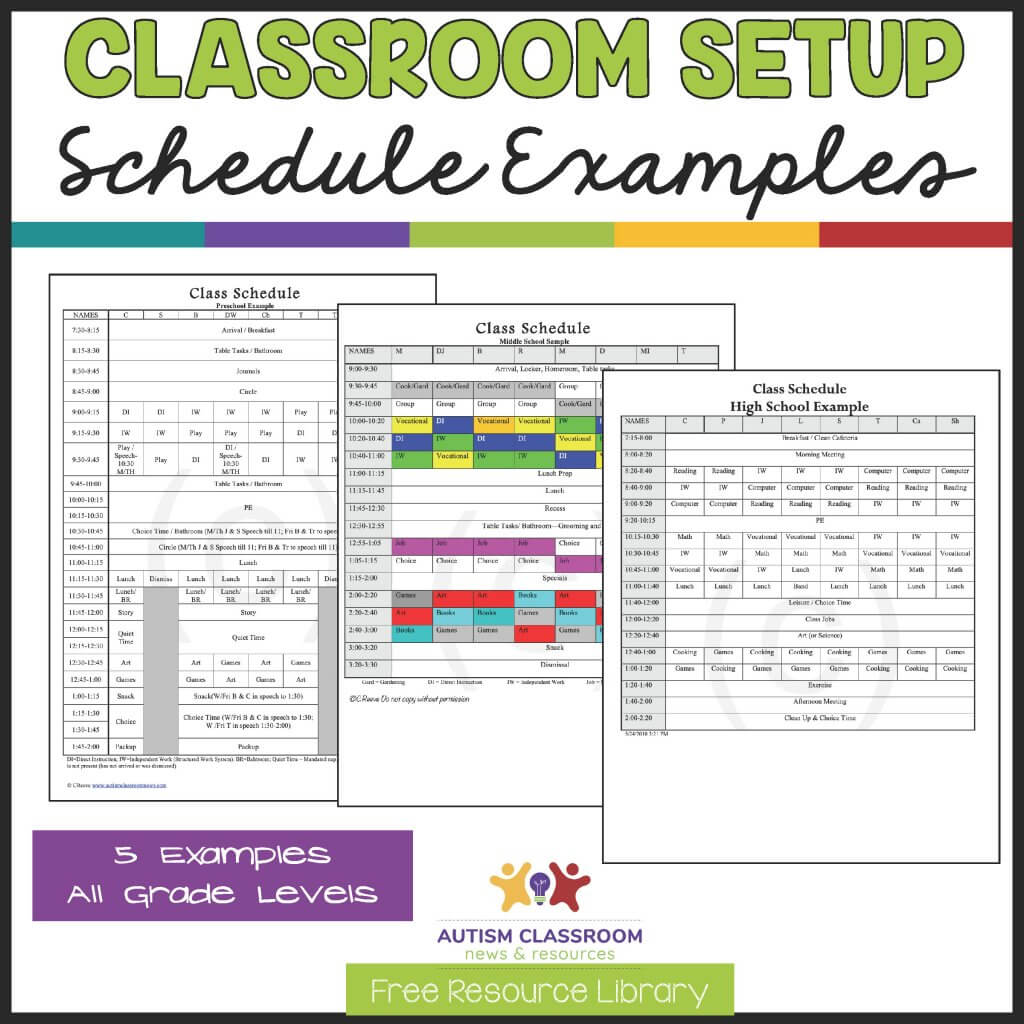Welcome to the Autism Classroom Resources Podcast, the podcast for special educators who are looking for personal and professional development.
I’m your host, Dr. Christine Reeve. For more than 20 years, I’ve worn lots of hats in special education but my real love is helping special educators like you. This podcast will give you tips and ways to implement research-based practices in a practical way in your classroom to make your job easier and more effective.
Welcome back to the Autism Classroom Resources Podcast. I am so excited that you are here. I am Christine Reeve and I’m your host. I am so excited that we are continuing on our series about getting from the IEP into designing our classroom. In our last five episodes, we’ve been talking about creating a collaborative IEP. Now that we have created our collaborative IEP with strong goals and objectives, here’s the thing, we have to actually implement the IEP. That’s our next step.
In order to be able to implement the IEP and all of the IEPs of all of our students because, of course, as special educators, we don’t have just one student, we have to start thinking about how we organize the learning environment. In special education, that means that we have to start thinking about all of our students’ IEPs so we can create our environment, whatever it is, to meet their individual needs.
In order to truly implement the IEP, we have to have a well-structured, well-organized classroom environment. I’ll share what my colleague, Dr. Susan Kabot, and I refer to as the CORE model in the post for this episode, and you can see it at autismclassroomresources.com/episode80. CORE stands for Classroom Organization Results in Effectiveness. What you’ll see in this model is that the heart, the center of the model is all of the structure of the classroom. That includes your IEP, your plan for implementing the IEP—which is what I’m going to talk about today—your schedule, the physical environment and layout, the visual supports, curriculum, data collection, classroom management, all of the things that make your classroom run on a day-to-day basis. That core supports all the evidence-based practices for building independence in academics, communication, and socialization.
If we don’t have the CORE, the structure and supports of the classroom or routine which have an evidence base to them as well, we can’t get to the implementation of those evidence-based intervention strategies for building their skills, primarily because we’re just spending all of our time putting out fires and managing behavior if we don’t have the CORE. Think about if you’re doing an exercise program and the trainer always points to the importance of working on your core. It’s the same with the classroom or any educational program. Even if you’re supporting students in general ed, you have to think about the core programs and how they’re supported in those classrooms.
We always have to make sure that we have a strong core, so those classrooms are running themselves and that allows us to focus on the instruction that we’re implementing. Just like when you have a strong core in your body, then you can start worrying about increasing your bicep strength.
That sets us up for the rest of the journey through the summer. I’ll be focusing on the CORE throughout the summer to help you get set up for the new school year. Today, we’re going to start with talking about the Teaching Implementation Plan or the TIP as a way to make sure that the IEP gets implemented effectively throughout the day, but also, as a way to help you make your job easier. Let’s get started.
The TIP is a method of planning out the implementation of each student’s IEP within the classroom. It makes sure that every goal and objective on the IEP that we talked about in the last five episodes is accounted for within the daily schedule of the day. I’ve written a good bit about it on the blog and I’ll make sure that those links go in the show notes at autismclassroomresources.com/episode80, so you can see examples of a Teaching Implementation Plan and how they work, so you can see all of what they look like. You’ll also find a link there to my manual for teaching plans and classroom schedules on Teachers Pay Teachers and if you’re looking for something that will walk you through with cheat sheets and supports to put it together, it’s got videos and all sorts of stuff that is a go-to plan.
Now, I am a firm believer in the quote from Mary Poppins, “Well begun is half done.” That is a terrible British accent. I believe that, although it takes a lot of time up front, it pays to spend the time at the beginning of the year to work on the core elements of the classroom because it’s the core, it supports the rest of instruction.
The first thing that we need to do at the beginning of the year is to get to know our students. Every year, we have at least some different students or all different students. So every year, our classrooms look different—the activities are different, the schedule is different, the materials may be different. One year, we might be supporting students in general ed, most of the day or all of the day and never spend any time in a special ed classroom. Next year, we might be in a completely self-contained classroom with very little time for students going out. It all just changes because of the students that we serve.
Here’s I think what’s really important to remember about that, and I know that you know this, it’s because we serve the students that we have, not the students that we want to have or wish we had or thought we would have or were told that we were hired that we would have. We have to build the classroom core around the needs of the students who show up in our classroom.
So step one in setting up any classroom is to get to know your students. The best way to do that I know of is to start by reviewing their IEPs up front and plan how we’re going to implement them. That’s where the Teaching Implementation Plan comes in. The TIP is a method of planning out the implementation of each student’s IEP within the classroom. It makes sure that every goal and objective on the IEP is accounted for across the schedule of the day, so that we know that we know how we’re going to teach the skill and how we’re going to measure the skill. It’s really a useful tool.
Now, I went through all the different elements of the TIP in Episode 42 and you can find that episode at autismclassroomresources.com/episode42. But in short, think of the TIP as a roadmap to plan out your instruction. You think of a primary teaching activity which is the when and where of the place in the activity or the time in the activity in which I’m going to get my opportunities to practice the skill and that’s also where I’m going to take my data. Where am I going to get the most opportunities to work on the skill? It might be reading or math. It’s an activity on my daily schedule, where am I fitting this in?
Then I have my incidental or generalization activities because our students are not set-it-and-forget-it types of students. We have to make sure that we’re addressing generalization and maintenance of their skills. These skills have to go beyond our initial instruction and they have to practice them.
But then, we also have to think of each of our goals and objectives, how are we teaching the skill? That’s our instructional method. It might be our curriculum. It might be a teaching strategy, like Discrete Trials or Pivotal Response Training or Picture Exchange Communication System, the PEC system or it might be using a lesson from the Unique Learning System. It can be a lot of different things but we have to really think about how we’re going to teach that skill.
Then we have to also account for how we’re going to track that skill, what is our data collection system? We have to match that up to the skill and make sure we’re tracking it in some way. In the end, we have a document that really maps out how we’re teaching and how we’re tracking our progress.
Now, I hear you saying, “But Chris, this sounds like more paperwork, how in the world does this make my life easier?” Which is what I promised you it was going to do and that’s an excellent question, here’s how. First, I gave you lots of the benefits in Episode 42 of the TIP in terms of communication with staff and family. Today, I want to talk a little bit beyond that and focus on how it makes your life easier. First, because it serves as a method of communication with staff, it’s an easier way to communicate the learning targets and student needs than the IEP, especially when you’re communicating with staff because it’s not bogged down in legalese.
Think about when you give an IEP to the staff, it’s a bunch of legalese that we’ve all learned to skip over because it’s boilerplate but it can be overwhelming especially in the new staff. It shows staff how and where the goals, and objectives are being implemented, not just what they are. Now, they know why you don’t want them to write Deandre’s name on his paper because that’s a goal you targeted for that activity for him to practice.
Two, it makes planning your schedule easier. Once your TIPs are complete, you have a really good idea of what activities you need to put in your schedule because you know what your students need, you know what skills you’re targeting in those activities as well. You can go through your students’ TIPs and be able to know what your activities need to look like when you put your schedule together. We’ll talk about that in an upcoming episode.
Third, when you’ve got your TIPs, you know what your data sheets need to be and that makes it really easy to pull them together because you’ve already planned out your data collection systems, you’ve already thought through what goes on your group data sheets, what individual data sheets do you need to create. That means no more last minute exhausted thoughts about how something’s going to be measured.
Four, it means your lesson plans are easier because you already know the types of activities that your students need because you know what you can fold their goals into.
Five, it means that at the time that you write your progress notes or if there’s ever a question about your student’s progress, hopefully, you aren’t going to suddenly realize that you didn’t have a plan to teach a required goal or objective, or that you didn’t have a data system in place assuming that you followed through on the plan from the TIP. It means that when anyone asks—your principal, a family member, a person from the special ed office—“How are you teaching the skill?” You have the answer right there in your teaching plan and that makes you look like the superstar teacher that you are.
Yes, it is more time upfront working on the TIP but the rest of it all falls into place so much faster when you have it all planned out ahead of time. Make sure that you hop over to autismclassroomresources.com/episode80 and you can grab the links to all the info about how to implement the TIP and look over the CORE model itself. You’ll find the links to my toolkit with TIP forms and cheat sheets to walk you through completing the TIP and creating your classroom schedule on TPT as well.
If you’d like additional help and support, we are starting a study group for the on-demand setting up of classroom spaces for maximizing engagement in the Special Educator Academy in a couple of weeks. During the study group, we meet weekly with challenges and prizes to walk through all the elements of completing the TIP to setting up the classroom space. It’s a fun way to get a chance to get some ideas and feedback from other amazing educators, and from me, and get a jump on the next school year, so your year will be well begun and half done.
You can grab a seven-day free trial at specialeducatoracademy.com. Thank you so much for joining me. I hope you’ll be back next week when I’ll be talking about setting up the classroom schedule. Until then, I’ll just be over here practicing my Mary Poppins accent and singing A Spoonful of Sugar. Have a great week.












